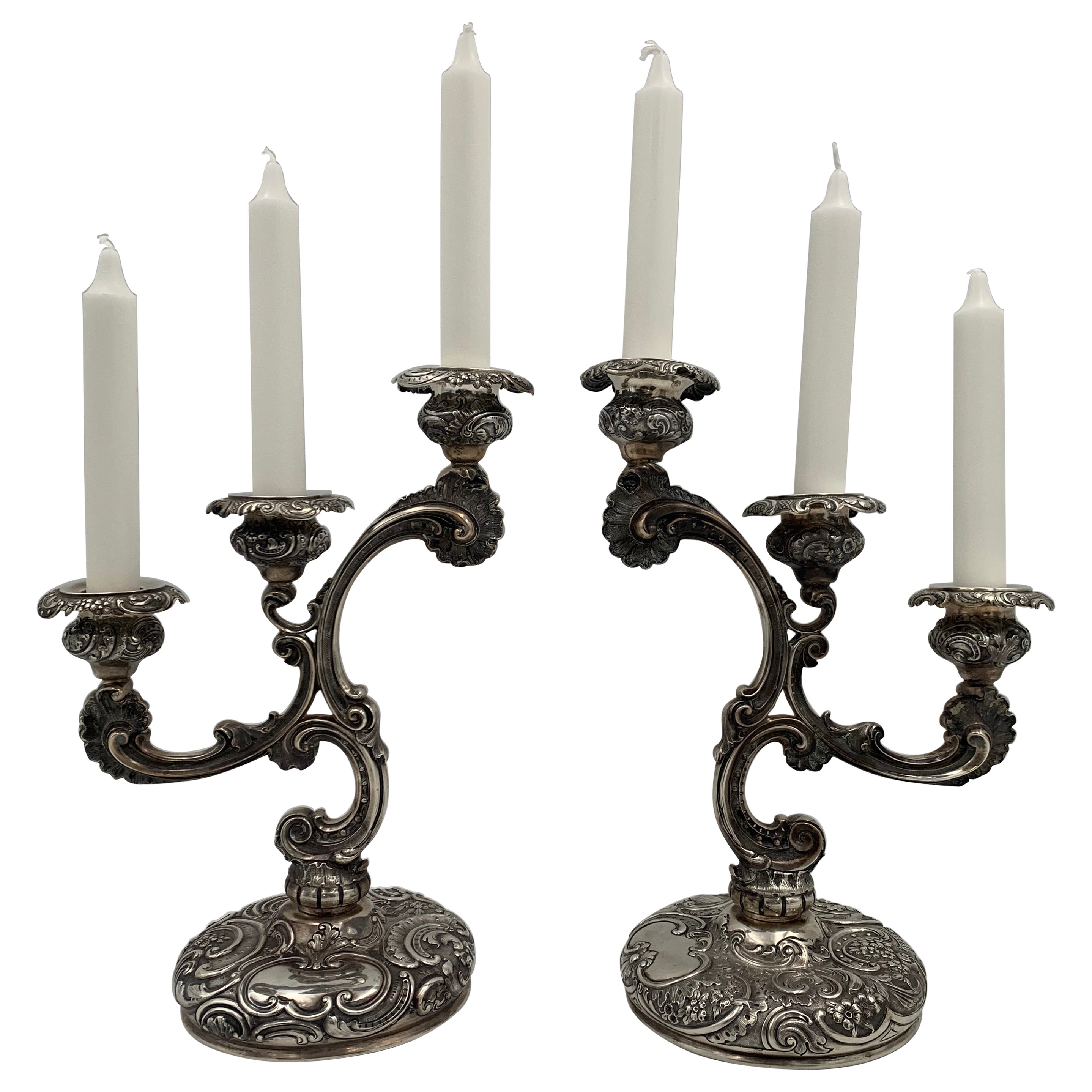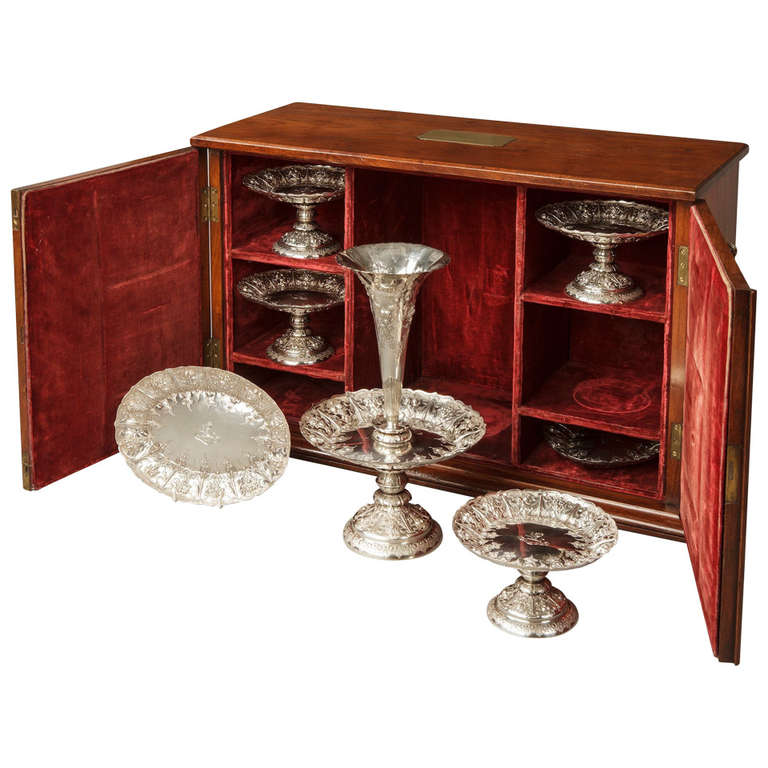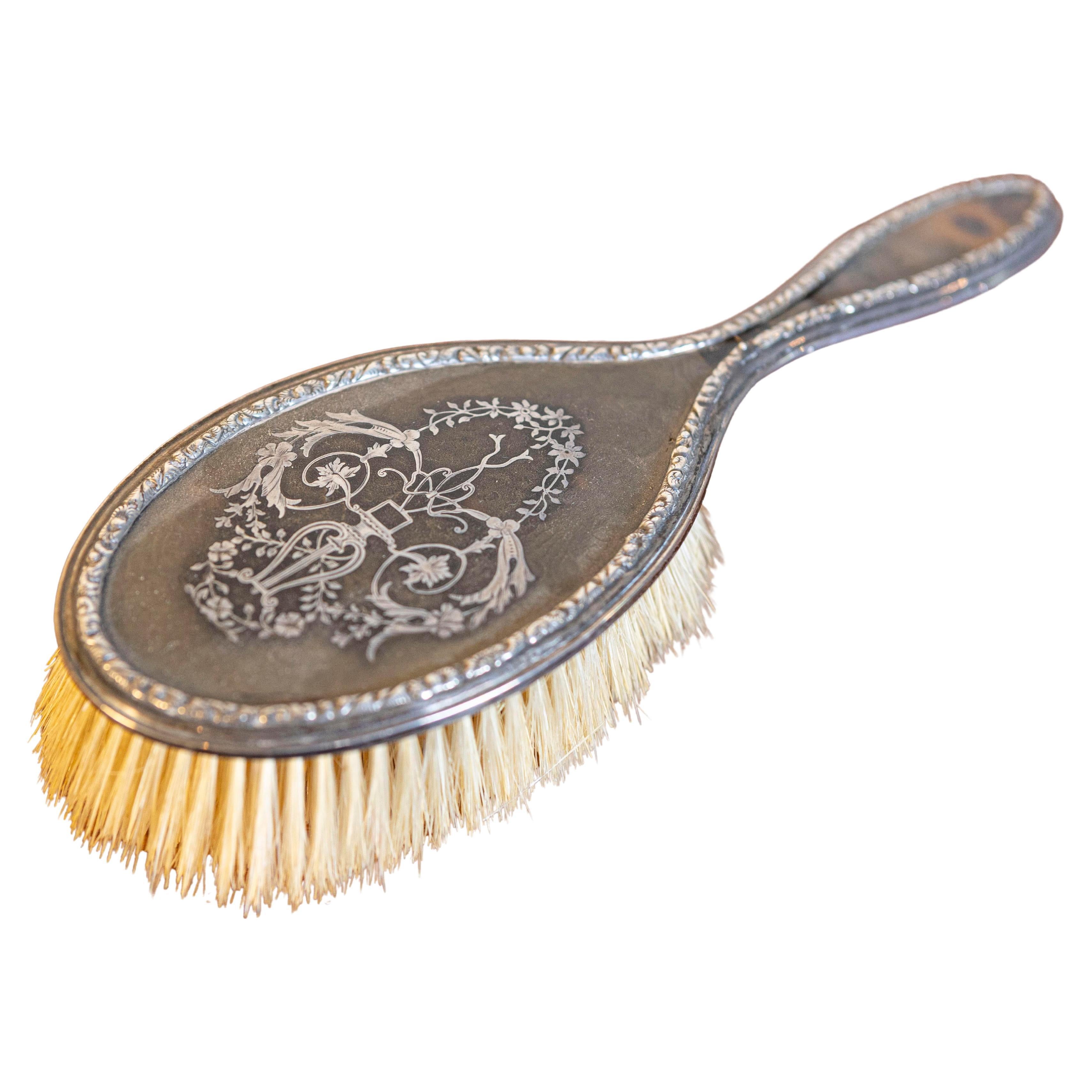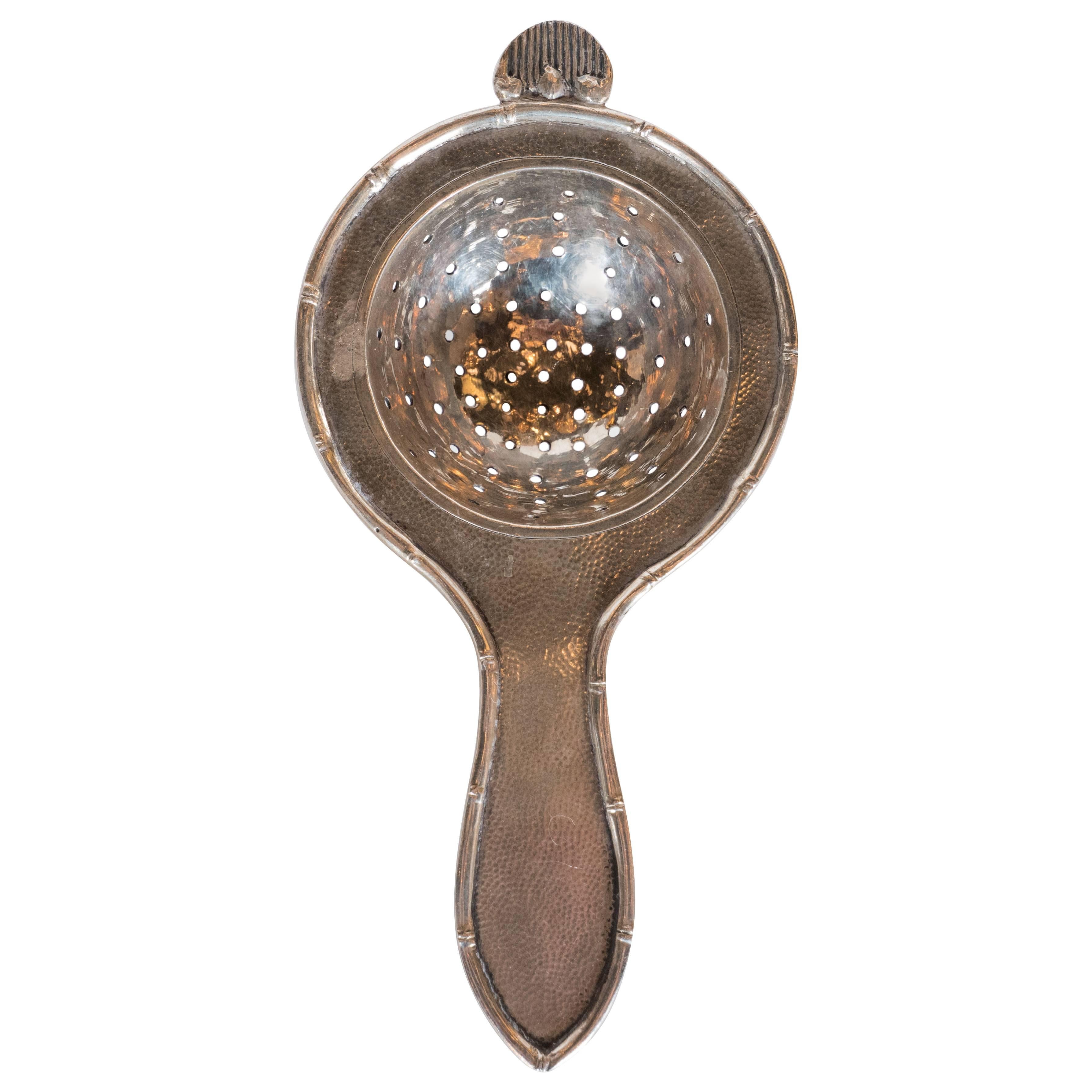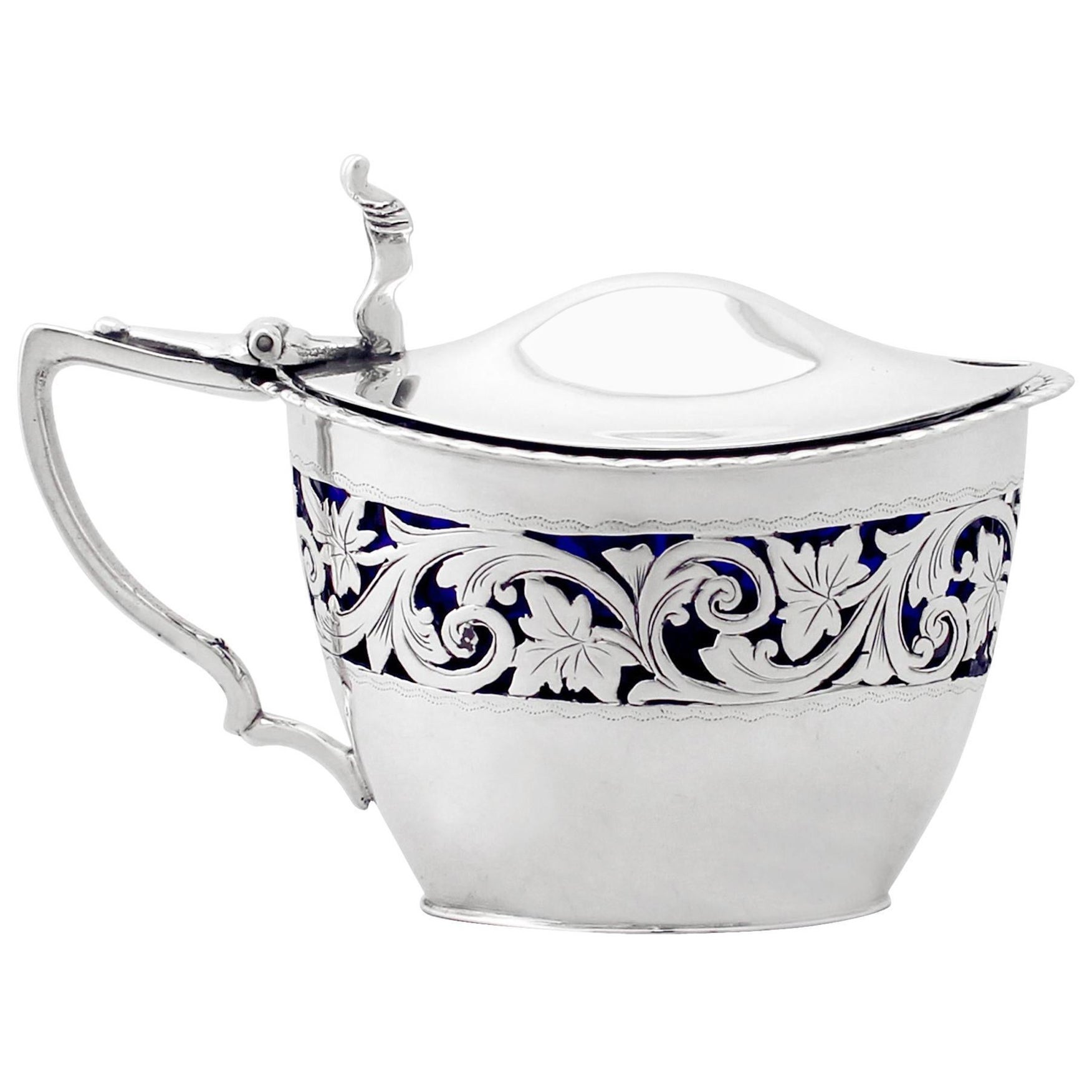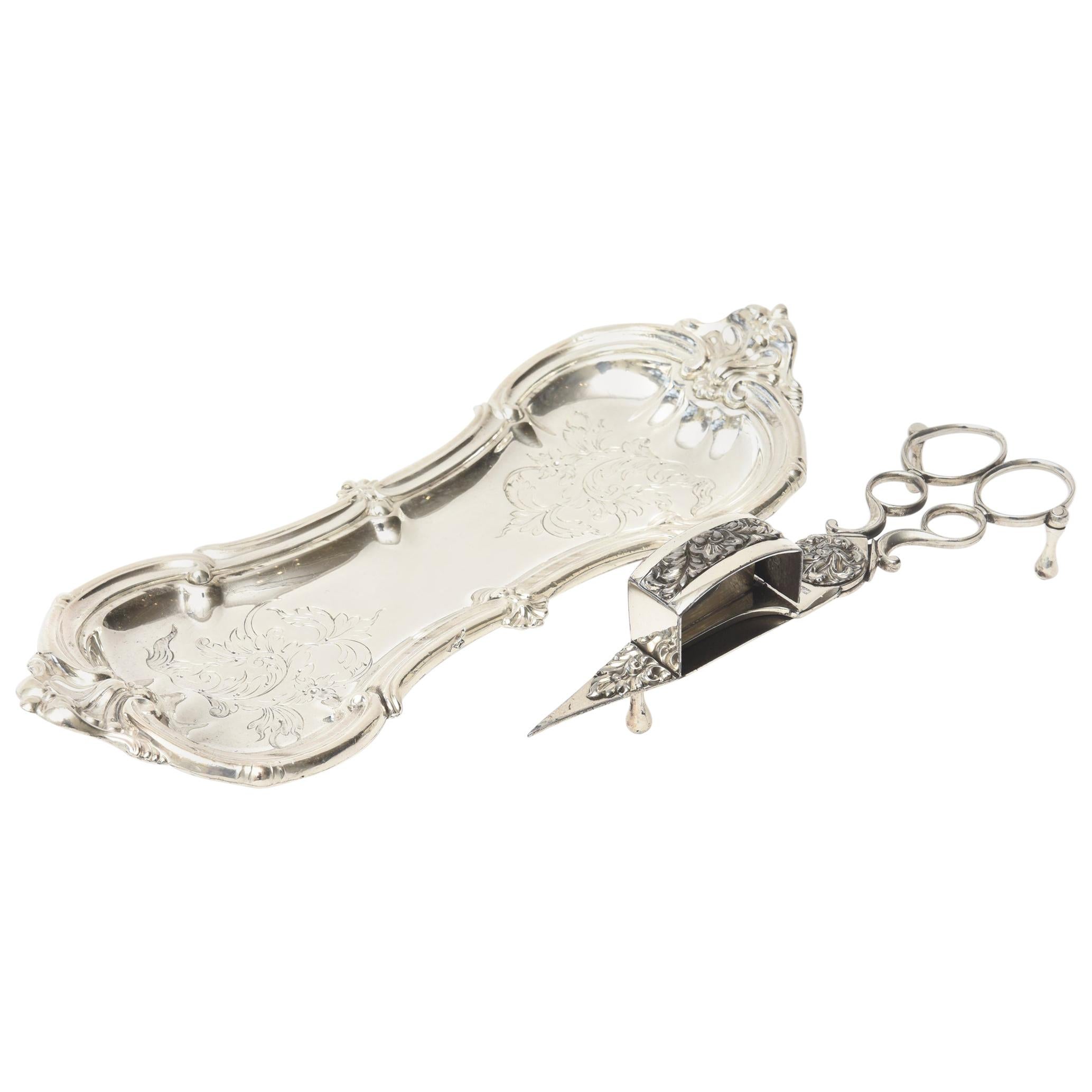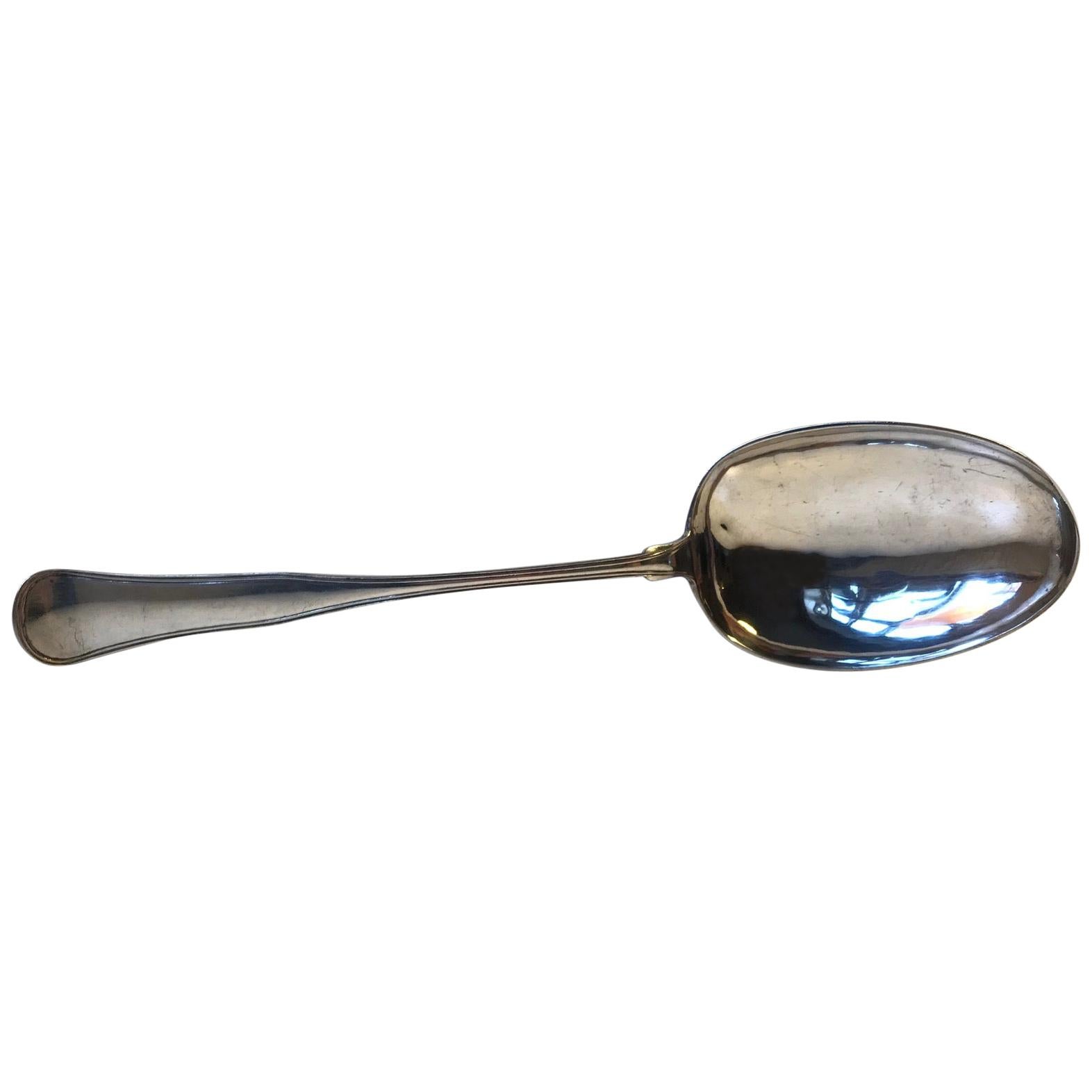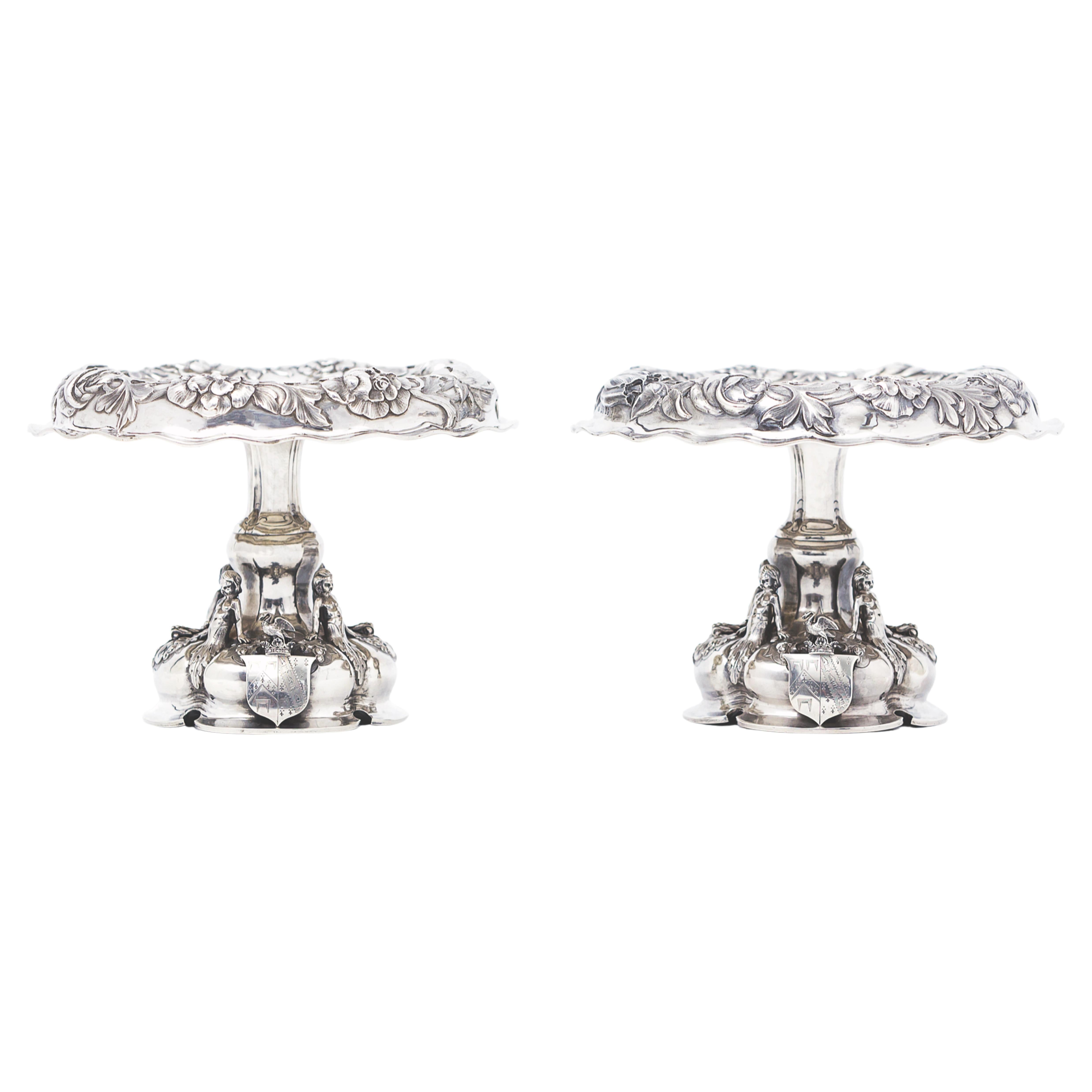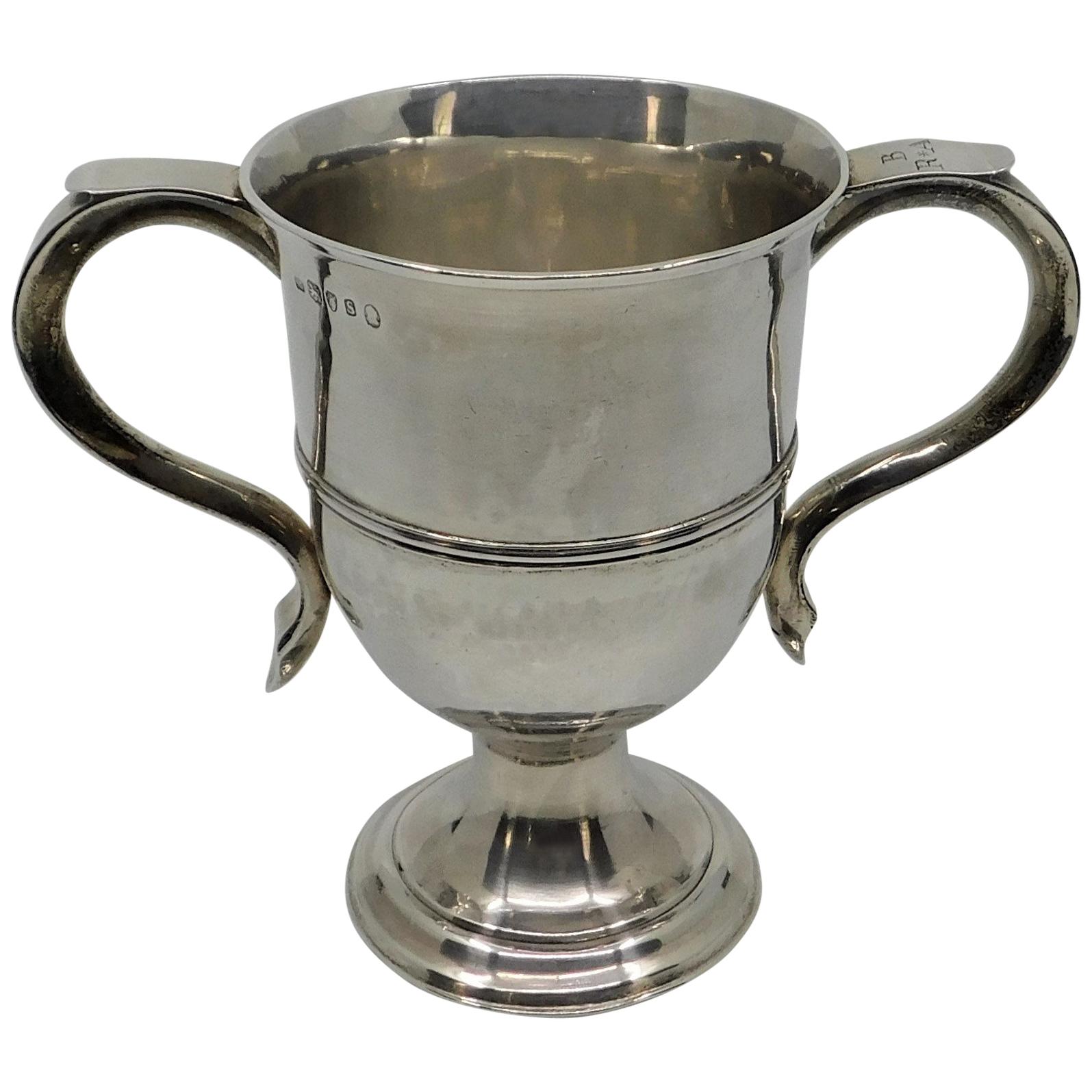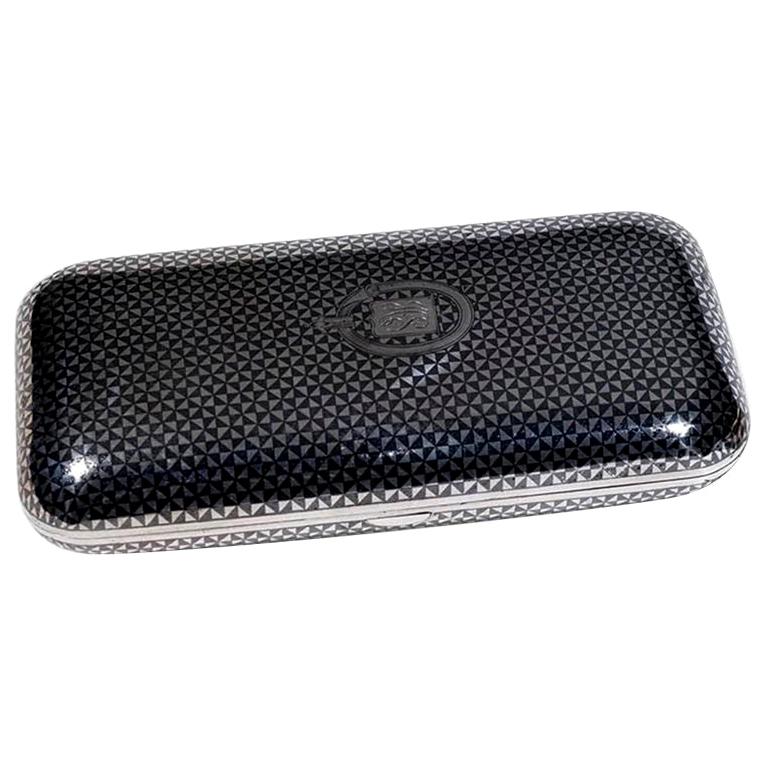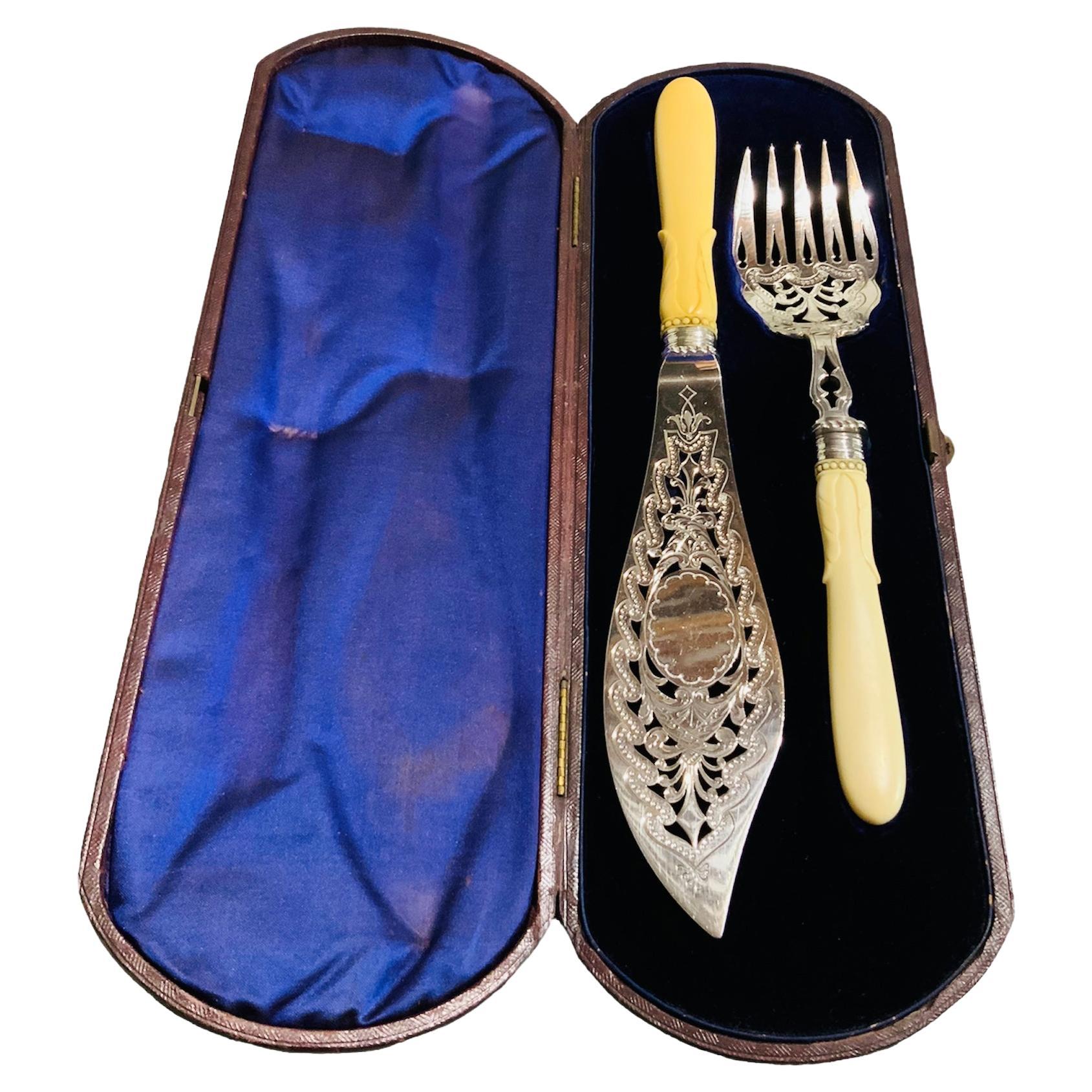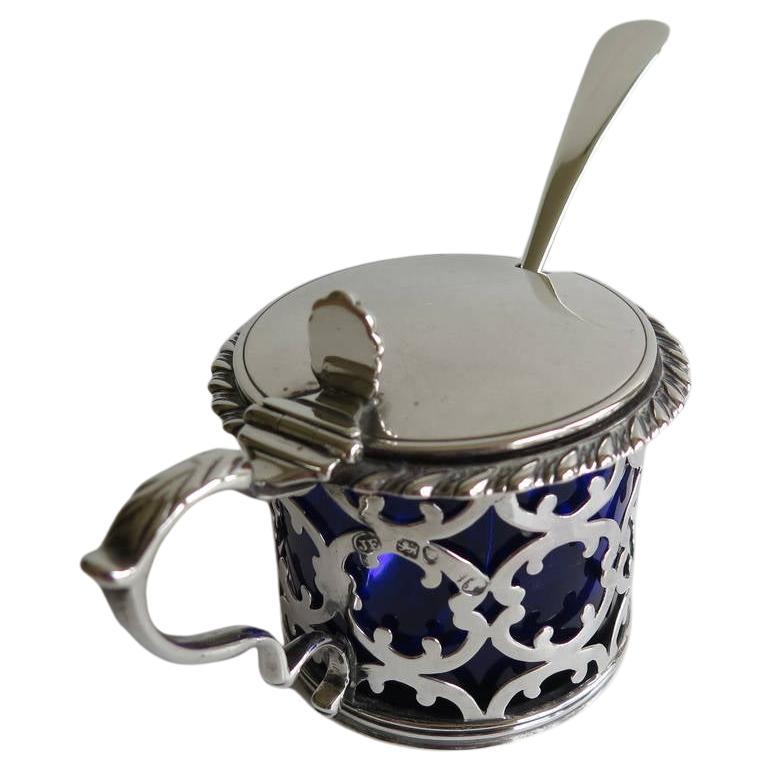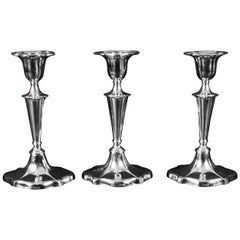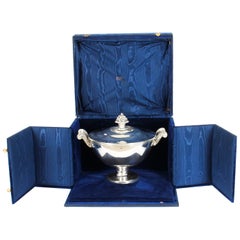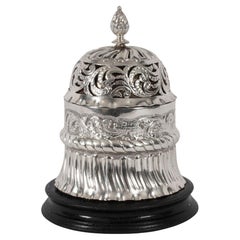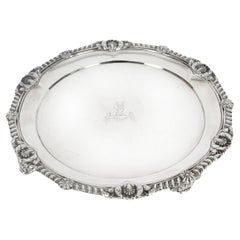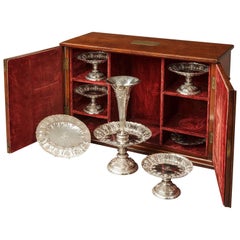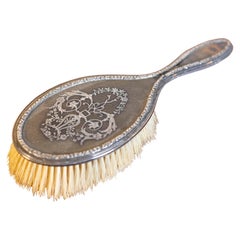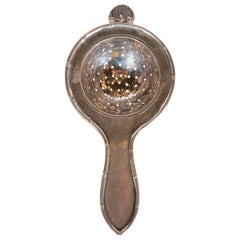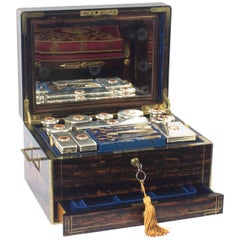
Antique English Coromandel and Silver Dressing Case by Leuchars, 19th Century
View Similar Items
Want more images or videos?
Request additional images or videos from the seller
1 of 17
Antique English Coromandel and Silver Dressing Case by Leuchars, 19th Century
About the Item
- Creator:Leuchars & Son (Maker)
- Dimensions:Height: 7.49 in (19 cm)Width: 13.39 in (34 cm)Depth: 9.45 in (24 cm)
- Style:Victorian (Of the Period)
- Materials and Techniques:
- Place of Origin:
- Period:
- Date of Manufacture:circa 1870
- Condition:
- Seller Location:London, GB
- Reference Number:Seller: 089761stDibs: LU950611038053
About the Seller
5.0
Platinum Seller
Premium sellers with a 4.7+ rating and 24-hour response times
Established in 1983
1stDibs seller since 2012
1,354 sales on 1stDibs
Typical response time: 1 hour
Associations
LAPADA - The Association of Arts & Antiques Dealers
Authenticity Guarantee
In the unlikely event there’s an issue with an item’s authenticity, contact us within 1 year for a full refund. DetailsMoney-Back Guarantee
If your item is not as described, is damaged in transit, or does not arrive, contact us within 7 days for a full refund. Details24-Hour Cancellation
You have a 24-hour grace period in which to reconsider your purchase, with no questions asked.Vetted Professional Sellers
Our world-class sellers must adhere to strict standards for service and quality, maintaining the integrity of our listings.Price-Match Guarantee
If you find that a seller listed the same item for a lower price elsewhere, we’ll match it.Trusted Global Delivery
Our best-in-class carrier network provides specialized shipping options worldwide, including custom delivery.More From This Seller
View AllAntique Set of 3 Sterling Silver Candlesticks Gibson & Langman 19th Century
Located in London, GB
This is a striking set of three antique English Victorian sterling silver candlesticks bearing the makers' marks of the renowned silversmiths William Gibson & John Langman, London, a...
Category
Antique 1890s English Victorian Sterling Silver
Materials
Sterling Silver
Antique Sterling Silver Tureen by Marc Jacquard Retailed by Bulgari 19th Century
Located in London, GB
This is a magnificent antique French sterling silver soup tureen and lid, retailed by Bulgari Rome with hallmarks for the maker Marc Jacquard and circa 1810 in date.
This round Silver Serving Tureen has Rococo elements perfectly accenting the elegant body, with bold scroll handles decorated with foliate and floral ornamentation and stands on a pedestal foot with an encircled border.
It features an exceptional cast floral and fruit bouquet finial on the lid.
The tureen is beautiful in its simplicity and comes with its own vintage luxury case labelled Bulgari.
Condition:
In excellent condition with clear hallmarks and no dings, dents or signs of repair. Please see photos for confirmation.
Dimensions in cm:
Height 28 x width 37 x depth 29
Weight 76 troy oz
Dimensions in inches:
Height 11.0 x width 14.6 x depth 11.4
Weight 2.36 kg
Bulgari
The founder of the Bulgari brand is Sotirios Voulgaris who was born in March 1857 and came from the Epirus Village of Paramythia, the largest Aromanian center of silversmithing in the Balkans. He was one of eleven children of his father Georgios Voulgaris (1823–1889) and his Aromanian mother Eleni Stronggaris. In 1881, Sotirios Bulgari moved to Rome and, in 1884, opened his first store on via Sistina 85. In 1888, he married Aromanian Eleni Basio with whom he had six children: Constantine-Georgios (1889–1973), Leonidas-Georgios (1890–1966), Maria-Athena (1891–1976), Sofia (1893–1908), Alexandra (1895–1984) and Spyridon (1897–1932); Leonidas-Georgios is the father of the current chairman of the company, Paolo Bulgari.[9] In 1905, he unveiled the Via Condotti shop that would become the company's flagship.[10] In its early years, Bulgari was known for silver pieces that borrowed elements from Byzantine and Islamic art, combining them with floral motifs. At the time, Paris was the apex of fashion and creativity, and its trends influenced Sotirio's designs for decades: jewels of the early 20s were characterised by platinum Art Deco settings while those of the 30s featured geometric diamond motifs—sometimes set in combination with coloured gemstones. Convertible jewels...
Category
Antique 1810s French Sterling Silver
Materials
Sterling Silver
Antique Sterling Silver Call Desk Table Bell, George Unite 1886 19th Century
By George Unite
Located in London, GB
A delightful antique English Victorian sterling silver call bell, bearing the makers mark of the renowned silversmith George Unite and hallmarks for Birmingham 1888 and Patent 801.
...
Category
Antique 1880s English Victorian Sterling Silver
Materials
Sterling Silver
Antique George III Sterling Silver Salver by Paul Storr 1811 19th Century
By Paul Storr
Located in London, GB
This is a wonderful English antique George III sterling silver 10 inch salver, by the world famous silversmith Paul Storr.
It has clear hallmarks for London 1811 and the makers mark of Paul Storr.
It is typical of his work with the raised gadrooned rim with anthemion at intervals, on four fabulous foliate bracket feet. The salver is engraved with a crest and motto and the underside is later engraved
Charlotte J. Parke from C. J. Parke, March 1893'
The centre is engraved with a crest above a motto 'True and Fast' and I have researched this crest:
The Crest of Parke
The crest as engraved upon this George III English Sterling Silver Footed Salver by Paul Storr hallmarked London 1811 is that of the family of Parke. It may be blazoned as follows:
Crest: A stag’s head couped sable holding in the mouth a key or
Motto: True and fast
The family of Parke originally hailed from the County of Cumberland in the northeast of England1 later settling in the County of Dorset at Henbury House, Sturminster Marshal, near Wimborne. Given the evidence of the inscription found on the underside of the salver ‘Charlotte J. Parke from C. J. Parke, March 1893’ it was undoubtedly at one time in the possession of Charles Joseph Parke (died 9th March 1893) of Henbury House aforesaid and gifted to Charlotte Josephine Parke (baptised 4th January 1857 died 2nd January 1941) his third daughter by his wife, Ellen Mary Ethelston. I would venture the following hypothesis that the salver was bequeathed to Charlotte in her father’s will that was granted probate at London on the 20th May 1893. The ‘March 1893’ of the inscription acts as a remembrance of the month of the death of her father. It was noted that Charlotte’s father left an estate worth some £66,892, 19 shillings and one pence, a very considerable sum in the last decade of the 19th Century and even thereafter. Charlotte never married and was living at the time of her death at The Coppice, Sixpenny Handley in the County of Dorset. Her will was proved for probate at Llandudno on the 25th March 1941. She left an estate worth £18,866, 10 shillings and 4 pence. Again, a comfortable sum in 1941.
See the photo of Henbury House, Sturminster Marshal, near Wimborne, Co. Dorset. The former seat of the Parke family. The house was destroyed by fire, the remains of which were demolished in the 1990's.
There is no mistaking its unique quality and design, which is sure to make it a treasured piece by any discerning collector.
Condition:
In excellent condition with clear hallmarks and no dings, dents or signs of repair. Please see photos for confirmation.
Dimensions in cm:
Height 2 x Width 26.5 x Depth 26.5
Weight 0.69 kg
Dimensions in inches:
Height 1 inch x Width 10 inches x Depth 10 inches
Weight 1.5 lbs
Paul Storr
born in London England in 1771, was to become one of the most talented silversmiths of the nineteenth century. Today his legacy of exceptionally well crafted silver, found worldwide in museums and private collections, leaves one in awe when compared to that of his contemporaries.After having served a seven year apprenticeship from the age of 14, he began his career in 1792 when he went into a brief partnership with William Frisbee. This did not last and in 1793 a new mark, (his initials ‘P S’) was entered. By the beginning of the nineteenth century he had established himself as one of London’s top silversmiths producing, amongst others, commissions for Royalty.
In 1801 he married Elizabeth Susanna Beyer with whom he was to have ten children. In 1807 Paul Storr entered into a working relationship with Philip Rundell and by 1811 was a partner, and managing the workshops for Rundell, Bridge & Rundell.
During this period he kept his own marks and separate workshop. However it was through Rundell, Bridge & Rundell who were appointed Goldsmith in Ordinary to George III in 1804 that his reputation as a master silversmith grew. His talents lay in being able to transform ideas and designs from Rundell, Bridge & Rundell’s designers, William Theed...
Category
Antique 1810s English George III Sterling Silver
Materials
Sterling Silver
Antique Large William IV Silver Tray Salver by Paul Storr 19th Century
By Paul Storr
Located in London, GB
This is a wonderful English antique William IV sterling silver tray, or salver, by the world famous silversmith Paul Storr.
It has clear hallmarks for London 1820 the makers mark of Paul Storr.
It is typical of his work with the octafoil shape and the exquisitely detailed reeded rim, and it is raised on four delightful foliate and scroll feet.
The centre is engraved with a shield shaped coat of arms which I have had researched.
The Marital Arms of Knollis and Hallifax
The armorial bearings as engraved upon this George IV Large English Sterling Silver Footed Salver by Paul Storr hallmarked London 1820 are those of the family of Knollis with Hallifax in pretence. These armorial bearings denote the marshalling of a marital coat showing the arms of the husband over the entire surface of the shield, whilst the arms of the wife (as an heraldic heiress) are placed on a small shield (known as an escutcheon of pretence) centrally on the husband’s arms.
They may be blazoned as follows:
Arms:
Quarterly 1st and 4th Azure crusily of cross crosslets a cross moline voided or (for Knollys) 2nd and 3rd Gules on a chevron argent three roses of the field barbed proper (for Knollys) over all an escutcheon of pretence Or on a pile engrailed sable between two fountains barry wavy of six argent and azure three cross crosslets of the first (for Hallifax)
Crest:
An elephant argent [differenced with a mullet1 ] (for Knollys)
Motto:
In utrumque paratus [Prepared for either] (for Knollys)
These armorial bearings undoubtedly commemorate the marriage of The Honourable and Reverend Francis Knollis2 (baptised 3rd January 1743 died 27th February 1826),
1 The cadency mark for a third son of a family. 2 Francis appears to have preferred this spelling of his family’s surname. It is spelt as it is to be pronounced.
of Burford in the County of Oxfordshire and of Eastleach Martin in the County of Gloucestershire and Mary Hallifax (baptised 5th March 1753 buried 18th December 1830). Francis and Mary were married at the Parish Church of St Mary, Ewell in the County of Surrey on the 9th June 1772. Francis was the third son of Charles Knollys (the titular 5th Earl of Banbury) 3 and his wife, Martha Hughes, whilst Mary was the daughter of The Reverend James Hallifax, of Ewell aforesaid and his wife, Elizabeth Chardavoyn.
3 Francis’s father claimed to be the 5th Earl of Banbury. A claim that continued to be pursued by the family until William Knollys, the titular 8th Earl of Banbury (born 1763 died 1834) was forced to discontinue its use by a resolution of the House of Lords which rejected his claim to the earldom in 1813.
The crest surmounts a detailed dedication:
This piece of plate was presented to the Honourable Rev Knolls by the inhabitants of the town and immediate neighbourhood of Burford on his completing the fiftieth year of his incumbency as the vicar of Burford.
In testimony of their high respect 11th April 1821
There is no mistaking its unique quality and design, which is sure to make it a treasured piece by any discerning collector.
Condition:
In excellent condition with clear hallmarks and no dings, dents or signs of repair. Please see photos for confirmation.
Dimensions in cm:
Height 3 x Width 36 x Depth 36
Weight 1.52 kg
Dimensions in inches:
Height 1 inch x Width 1 foot, 2 inches x Depth 1 foot, 2 inches
Weight 49 troy oz
Paul Storr
born in London England in 1771, was to become one of the most talented silversmiths of the nineteenth century. Today his legacy of exceptionally well crafted silver, found worldwide in museums and private collections, leaves one in awe when compared to that of his contemporaries.After having served a seven year apprenticeship from the age of 14, he began his career in 1792 when he went into a brief partnership with William Frisbee. This did not last and in 1793 a new mark, (his initials ‘P S’) was entered. By the beginning of the nineteenth century he had established himself as one of London’s top silversmiths producing, amongst others, commissions for Royalty.
In 1801 he married Elizabeth Susanna Beyer with whom he was to have ten children. In 1807 Paul Storr entered into a working relationship with Philip Rundell and by 1811 was a partner, and managing the workshops for Rundell, Bridge & Rundell.
During this period he kept his own marks and separate workshop. However it was through Rundell, Bridge & Rundell who were appointed Goldsmith in Ordinary to George III in 1804 that his reputation as a master silversmith grew. His talents lay in being able to transform ideas and designs from Rundell, Bridge & Rundell’s designers, William Theed...
Category
Antique 1820s English William IV Sterling Silver
Materials
Sterling Silver
Antique Sterling Silver Punch Bowl Walker & Hall 1893 19th C
By Walker & Hall
Located in London, GB
This is a large gorgeous antique Victorian sterling silver punch bowl bearing the makers mark of the renowned silversmiths Walker & Hall and hallmarks for Sheffield 1893.
This exquisite punch bowl is also ideal as a champagne cooler and it has beautiful and incredibly detailed embossed half fluted decoration and is raised on a pedestal foot.
This is truly a special item and it will attract the maximum amount of attention, the quality and craftsmanship are undeniable.
Condition:
In excellent condition with clear hallmarks and no dings, dents or signs of repair. Please see photos for confirmation.
Dimensions in cm:
Height 15 x Width 26 x Depth 26
Weight 0.87 kg
Dimensions in inches:
Height 6 inches x Width 10 inches x Depth 10 inches
Weight 28 troy oz
Walker & Hall
the business was established in Sheffield in 1845 by George Walker...
Category
Antique 1890s English Victorian Sterling Silver
Materials
Sterling Silver
You May Also Like
Leuchars English 1889 Pair of 3-Light Sterling Silver Candelabra in Rococo Style
By Leuchars & Son
Located in New York, NY
Pair of finely chased, 3-light English sterling silver candelabra by William Leuchars from 1889 with removable bobeches in ornate Rococo style with floral motifs and stylized, curvil...
Category
Antique 1880s English Sterling Silver
Materials
Silver, Sterling Silver
19th Century English Sheffield Hall Marked Silver Table Service with Case
By Frederick Elkington
Located in London, GB
A fine Sheffield hall marked silver cased table service by Frederick Elkington
The seven piece suite comprising;- a tiered epergne, four footed sweet...
Category
Antique 19th Century English Victorian Platters and Serveware
Materials
Silver
English 19th Century Silver Dressing Table Brush with Lyre and Floral Arabesques
Located in Atlanta, GA
An English silver dressing table brush from the 19th century with silver piqué décor of lyre and floral arabesques. Born in England during the 19th century, this exquisite dressing t...
Category
Antique 19th Century English Sterling Silver
Materials
Silver
English 19th Century Sterling Silver Perforated Tea Strainer
Located in New York, NY
This beautiful and refined tea strainer was realized in England- arguably the birthplace of fine silverware- during the 19th century. It features a con...
Category
Antique 19th Century English Victorian Sterling Silver
Materials
Sterling Silver
19th Century Victorian English Sterling Silver Mustard Pot
By Stokes & Ireland Ltd
Located in Jesmond, Newcastle Upon Tyne
A fine and impressive antique Victorian English sterling silver mustard pot; an addition to our silver cruets/condiments collection.
This exceptional antique Victorian sterling silver mustard pot has an oval tapering form.
The body of the mustard pot is embellished with a broad shaped band of pierced scrolling leaf ornamentation flanked with undulating wigglework decorated borders.
The flared upper rim of this silver mustard pot is encompassed with an applied gadroon decorated border.
This Victorian mustard pot retains the original hallmarked hinged, plain domed cover surmounted a shaped bifurcating thumbpiece.
This fine example of antique silverware is fitted with a shaped handle featuring an incurved, shaped thumbpiece.
The mustard pot is fitted with the original removable blue glass liner.
This impressive sterling mustard pot...
Category
Antique 1890s English Victorian Sterling Silver
Materials
Silver, Sterling Silver
Victorian Silver Candle Snuffer with Tray 19th Century English
Located in North Miami, FL
This 2 part candle snuffer is from the late 19th century Victorian. The snuffer shears are sterling silver except for the part that puts out the flame. It has many hallmarks. The tra...
Category
Antique 1880s English Victorian Sterling Silver
Materials
Metal, Sterling Silver
Recently Viewed
View AllMore Ways To Browse
Antique Table With Removable Glass Top
Antique Silver Medalions Jewelry
Antique Dressing Table Tray
Asprey Tray
Vintage Salt And Pepper Pots
Antique Mother Of Pearl Knife
Antique Gold And Glass Coffee Table
Antique Condiment Sets
Antique Silver Cake Knife
Antique Silver Pepper Pot
Antique Silver Sugar Sifters
Antique Sugar Sifter
Antique Salt And Pepper Shakers Glass
Antique Silver Condiment Set Silver
Antique Fish Cutlery
Antique Glass Oil Bottles
Antique Wood Handle Knife
19th Century Sterling Silver Cutlery
